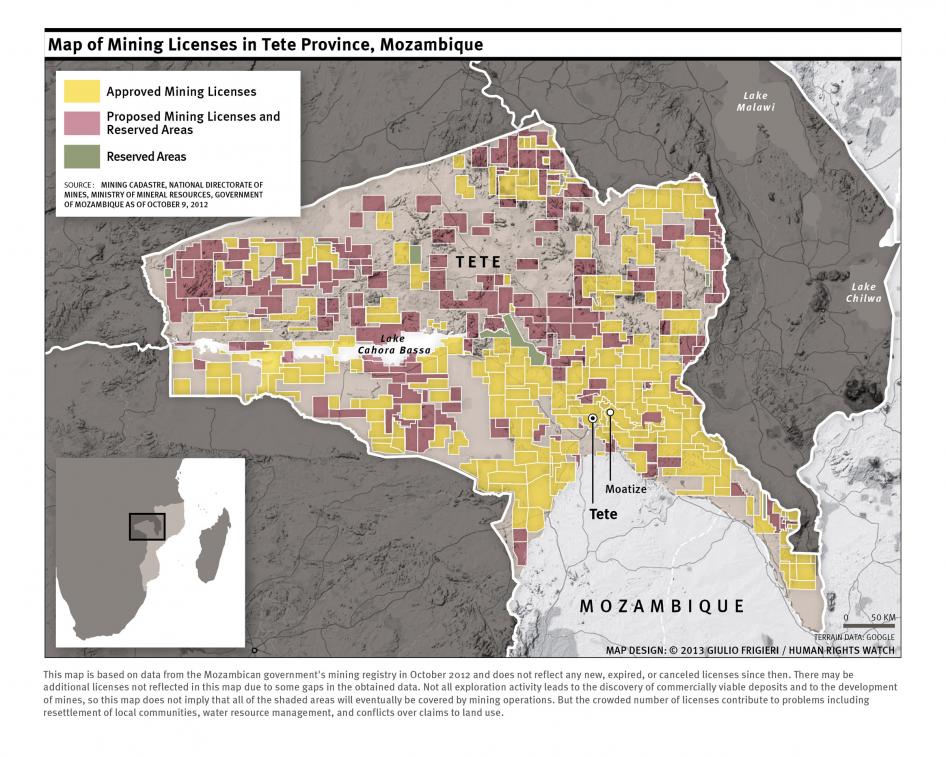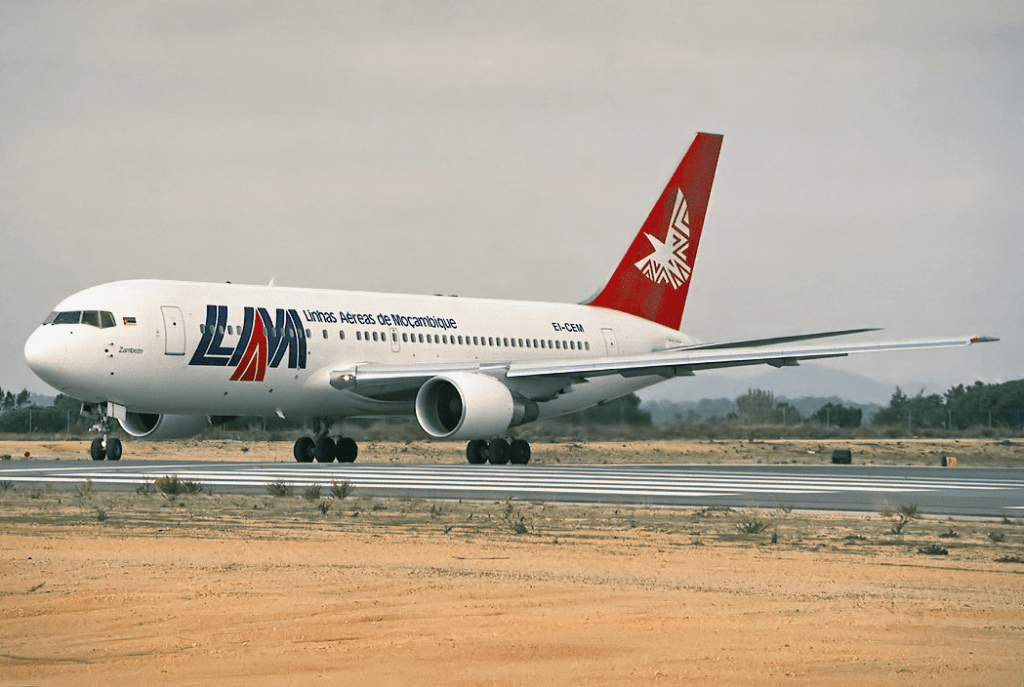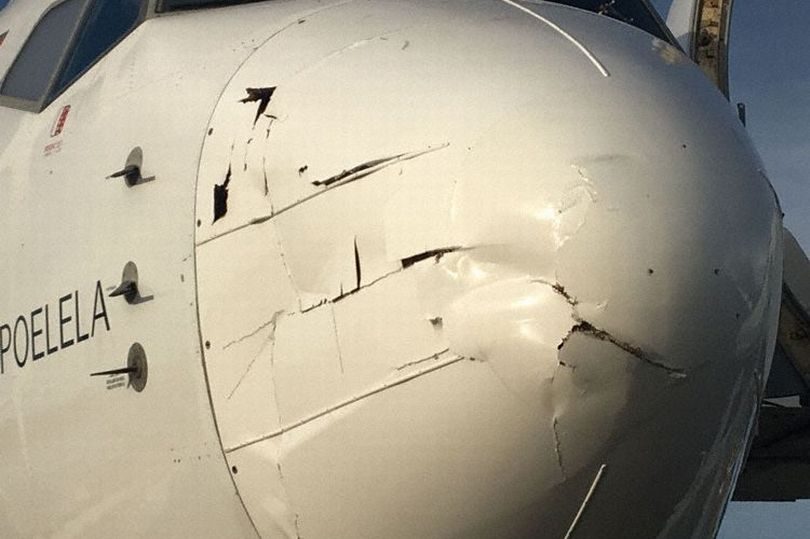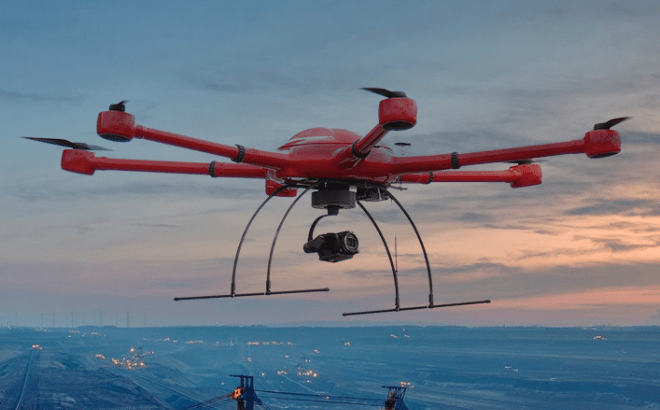An incident occurring in Mozambique this weekend has been widely reported as a drone crash. Photos of the aircraft indicate that the collision caused extensive damage. But what really happened, and what kind of drone caused the damage?
The incident was originally reported by The Aviation Herald: “LAM Linhas Aereas de Mocambique Boeing 737-700, registration C9-BAQ performing flight TM-136 from Maputo to Tete (Mozambique) with 80 passengers and 6 crew, was on final approach to Tete when the crew heard a loud bang, no abnormal indications followed. The crew suspecting a bird strike continued the approach for a safe landing.
The incident was originally reported by The Aviation Herald: “LAM Linhas Aereas de Mocambique Boeing 737-700, registration C9-BAQ performing flight TM-136 from Maputo to Tete (Mozambique) with 80 passengers and 6 crew, was on final approach to Tete when the crew heard a loud bang, no abnormal indications followed. The crew suspecting a bird strike continued the approach for a safe landing.
A post flight examination revealed a drone had impacted the right hand side of the radome.
The airline confirmed the occurrence, a replacement aircraft was dispatched to Tete to perform the return flight. The occurrence aircraft is being repaired.”
This was the first time that a reported drone incident has resulted in any damage to the aircraft. While it is still difficult in the absence of any drone parts or debris, to provide proof that the collision was in fact caused by a drone, the damage does indicate that the aircraft collided with some dense object. And while the damage was not sufficient to create a problem with the jet’s flight or function, it is clearly significant. So what really happened in Mozambique?

Map from Ejetlas.org
A look at the pictures shows a much wider range of damage than could be expected from a standard DJI or other consumer or prosumer drone. And that makes sense, given that Tete province in Mozambique is a major center for mining: mineral and coal mining are the primary industry in the area. This 2013 map of coal mining licenses in the region shows the city of Tete – and the Tete airport – virtually surrounded by coal mining.
Mining is one of the industries that has aggressively adopted drone technology, which provides a significant return on investment. But mining equipment is big, coal mines can be vast, and an industrial drone used for mining can be larger than a standard quad. An example of one is pictured below; the drone weighs about 26 pounds without payload, which can be up to another 10 kg
The airline confirmed the occurrence, a replacement aircraft was dispatched to Tete to perform the return flight. The occurrence aircraft is being repaired.”
This was the first time that a reported drone incident has resulted in any damage to the aircraft. While it is still difficult in the absence of any drone parts or debris, to provide proof that the collision was in fact caused by a drone, the damage does indicate that the aircraft collided with some dense object. And while the damage was not sufficient to create a problem with the jet’s flight or function, it is clearly significant. So what really happened in Mozambique?

Map from Ejetlas.org
A look at the pictures shows a much wider range of damage than could be expected from a standard DJI or other consumer or prosumer drone. And that makes sense, given that Tete province in Mozambique is a major center for mining: mineral and coal mining are the primary industry in the area. This 2013 map of coal mining licenses in the region shows the city of Tete – and the Tete airport – virtually surrounded by coal mining.
Mining is one of the industries that has aggressively adopted drone technology, which provides a significant return on investment. But mining equipment is big, coal mines can be vast, and an industrial drone used for mining can be larger than a standard quad. An example of one is pictured below; the drone weighs about 26 pounds without payload, which can be up to another 10 kg
In addition to the use of larger, heavier drones for industrial purposes, according to UAV Systems International, Mozambique does not require certification or licensing for commercial drone pilots. And while the current drone regulations do say that drones must avoid airports, the many coal mining sites directly surrounding the city must assuredly make compliance and enforcement of that regulation challenging.
While a drone collision is serious for everyone in the industry, it would appear that the event in Mozambique is not likely to be immediately duplicated elsewhere. It does, however, highlight the importance of training and responsible flying by commercial drone operators. It also makes evident the need for the industry to push forward on drone integration systems that will allow air traffic controllers, drone operators, and jet pilots to be aware of one another.
Read more at:



No comments:
Post a Comment